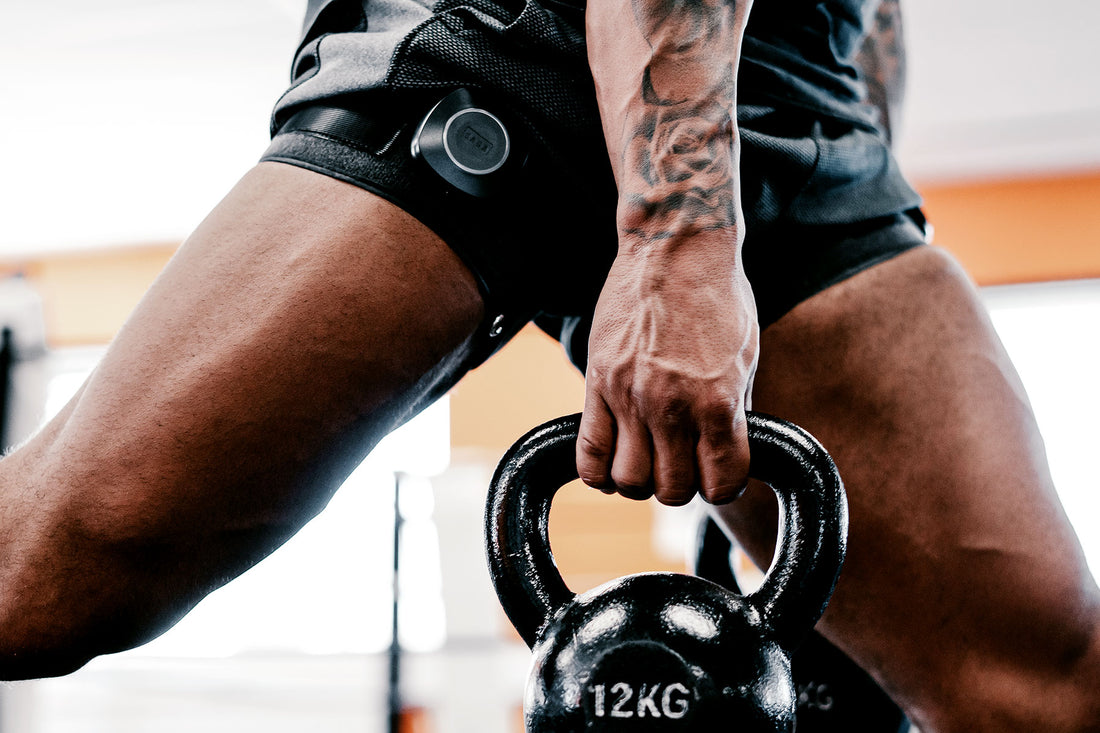Here’s How Olympians Utilised BFR Training in the Olympics 2020
If you followed the Olympics this year, you may have noticed a wave of athletes utilizing BFR bands between competitions.
The NY Times first reported Blood Flow Restriction Training a few weeks ago as a “Hot Fitness Trend Among Olympians”. Since then, several media outlets have covered athletes and their coaches practicing blood flow restriction.

Galen Rupp, left, and Michael Andrew both use blood flow restriction when training. Credit: Cliff Hawkins/Getty Images; Hiroko Masuike/The New York Times
So, why exactly are they doing this?
There could be several reasons, but for the sake of this blog, we’ll break it down to two:

Blood Flow Restriction Training for Muscle Growth
We know that mechanical tension is the most powerful (known) driver of muscle growth. Mechanical tension simplified is just the force placed on your muscles when you contract them against resistance.
Mechanical tension even more simplified is resistance training.
Resistance training is amazing, and in most cases should make up the foundation of one’s programming for strength, power, and muscle growth. But it comes with a few “side effects” that can make it less than ideal in situations like the Olympics.
First, resistance training is a stress that requires resources to recover from. In most cases, this stress falls under what we call hormesis – something that is stressful to the body in the short term but causes a favorable long-term adaptation.
Well, when athletes are competing in one of the most strenuous and high-pressure environments in the world (for weeks at a time no less), their bodies may not have the resources to recover from resistance training at the same level as they’re used to.

Winter Olympian Meaghan Mikkelson uses BFR Bands to prepare for the 2022 Beijing Winter Olympics. Source: Instagram
But what happens when you stop resistance training?
You lose muscle.
What happens when you lose muscle? Your performance drops, and your injury risk likely increases. Well, that’s a bit of a catch 22. Enter Blood Flow Restriction Training.
One of blood flow restriction’s flagship benefits (replicated many times in research) is its ability to help maintain and/or build muscle mass with significantly less loads (weight). Utilising BFR Bands, athletes can still provide a great training stimulus to their bodies without the need to load heavy weights.
This minimises the resources the body needs to recover from workouts so the athletes can focus on recovering from competition. All while maintaining muscle mass. Oh, and there’s a nice added benefit of applying less stress to joints and connective tissue, which tend to take longer to recover than muscle.
What does this mean for you?
Most of the world is watching the Olympics this year as opposed to competing, so if you’re reading this, there’s a good chance you’re not one of the select athletes on TV.
So, how does this apply to you? Fair question. Have you ever had a time where you were either unable, or it was less than ideal to train with heavy weights?
Maybe when you’re traveling.
Maybe when your gym is closed.
Maybe when your training focus is not directly on hypertrophy only, because you’re training for a marathon, Jiu Jitsu competition, or spartan race. Or maybe when your training could just use a break (during a de-load phase for instance). This leads us to our next point:
BFR Training for Recovery
We sort of already touched on it.
As legendary strength coach & Chiropractor Jordan Shallow says, “The best recovery is proper programming.” So in essence, it’s a bit counterintuitive to continually overcook ourselves in training and then fall back on massage, supplements, pharmaceuticals, and recovery products to counter the damage.
Instead, we should program our training in such a way where we can keep driving stimulus to the body at levels that result in positive adaptations. Sometimes that means dialing back on volume, intensity, or both. Training with BFR bands provides this powerful stimulus while minimizing recovery demand.
This means less time spent training, less weight, less stress on joints, and more recovery (without the reliance on other recovery modalities) while simultaneously maintaining or even gaining muscle mass. We may not all need to train like the world’s greatest athletes, but we can learn a thing or two from how they operate and find great success in replicating what we can.
SAGA’s BFR Cuffs are the world’s first wireless, automated training cuffs. This takes the guesswork (and hassle) out of your BFR training and allows you to understand clearly what level of occlusion you’re training at.

Shop The BFR Cuffs here.

